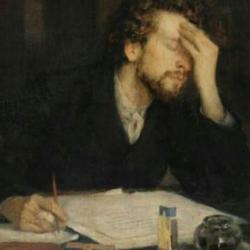David Bentley Hart writes somewhere about the revolutionary character of the gospel’s depiction of the tears of Peter after his denial of Jesus. Ancient pagan writers, Hart argues, could only have seen the tears of a fisherman as material for parody, not pathos.
This was explicitly the aim of Victor Hugo’s work:
J’ai, dans le livre, avec le drame, en prose, en verse,
Plaide pour les petits and pour les miserables;
Suppliant les hereux et les inexorable;
J’ai rehabilite le bouffon, l’histrion,
Tous les damnes humains, Triboulet, Marion,
Le laquais, le forcat, et la prostituee.
In Joseph Frank’s translation:
“With book and play, in prose, in verse, I have
taken up the cause of the weak and those in misery;
Pleading with the happy and the pitiless;
I have raised up the clown, the comedian
All human beings who are damned, Triboulet, Marion,
The lackey, the convict, and the prostitute.”
Dostoevsky saw in this “a Christian and highly moral” ideal, and formulated Hugo’s fictional creed “as the regeneration of fallen mankind, crushed by the unjust weight of circumstances, the inertia of centuries and by social prejudices . . . [and as] the justification of the humiliated and of all the rejected pariah’s of society.”
Taking cues from the gospels, we can say that this is one of the principal aims of Christian literature: To dignify the sufferings of the forgotten and marginal, the yokels and the lowborn. It is Pauline soteriology applied as both a social and a literary program: The justification of the ungodly.











